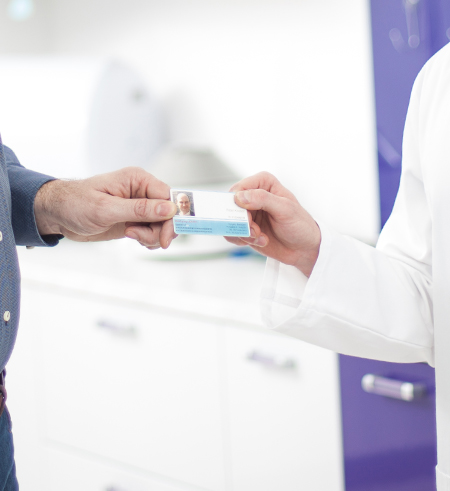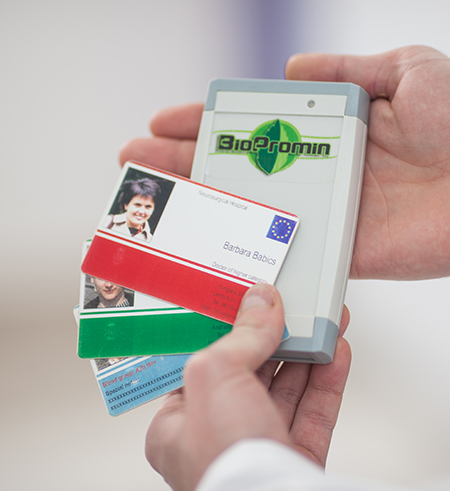

Medical ID Card (personal medical card of the patient) provides an opportunity to Doctors and Insurance Service Providers to get quick access to information about the patient’s health status.
Order
The ease of recording / viewing the diagnosis according to ICD-10, medical and insurance information of the patient determines the main condition for the convenience of using the Medical ID Card for the doctor. Cryptographic protection of medical passport data at the program level excludes unauthorized access. When combined into a single information processing network, the Medical ID Card system can generate the following statistical information:
number of appeals to a particular medical institution for a period;
types of diagnoses delivered during the period and issuing strict prescriptions;
in real time to monitor the incidence of the population;
determine the need to purchase medicines and install additional equipment, depending on the specificity of the incidence of the population.

Identification of visitors to medical institutions

Record and store information about the patient and the results of the survey.

Recording and storing the history of patient requests for medical services and analyzing the results of treatment.

Record and store the patient's insurance policy data.

Collection and analysis of data on the workload of medical institutions in general and in specific areas.
The User Guide includes the information about capabilities and features of the Medical ID Card, the description of the navigation bar as well as the sequence of actions for registration of a user (doctor or insurance agent) and procedure of working with the software.

Using the Medical ID Card in clinical practice makes it possible to reduce paperwork and significantly reduce the risk of losing valuable information about patients (contraindications, allergens, diagnosis). Files with medical and insurance information have an electronic form. Data on the patient’s state of health are recorded in a standardized questionnaire, convenient for viewing and analysis. The encoding of the data record corresponds to the International Classification of Diseases ICD-10. The collected quantitative data on the patient’s health can be used in machine learning to automatically find solutions and assist doctors in diagnosing. A single information processing network provides an opportunity to restore the medical and insurance history of a patient in case of physical damage or loss of a medical passport.
The Medical ID Card contains complete information about the patient’s medical condition, history of illnesses and contraindications to the use of drugs. The personal card is compact (it has the dimensions of a credit card), it is resistant to external influences (moisture, dirt, temperature changes), it is convenient to keep it with you.


A single information processing network allows an insurance company to receive current information about changes in the number of customers and the occurrence of insured events.